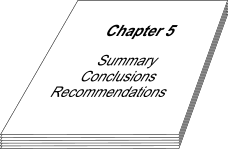Table of Contents
Introduction
This article tells what a budding researcher must include in Chapter 5-the Summary. It also includes the tense of the verb and the semantic markers, which are predominantly used in writing the summary, conclusions, and recommendations.
For others, writing Chapter 5 is the easiest part of thesis writing, but there are groups of students who would like to know more about it. If you are one of them, this article on how to write chapter 5 of your thesis is purposely written for you.
What to Write in Chapter 5
1. Write the Summary
Your summary in Chapter 5 may include:
- objectives of the study.
- statement of the problem.
- respondents.
- sampling procedures.
- method/s of research employed.
- statistical treatment/s applied, or hypotheses tested, if there is any; and
- results.
If you notice, all the parts mentioned above are already included in your Chapters 1- 4. So, the challenge is on how you are going to write and present it in Chapter 5 briefly.
First, you must go directly to the point of highlighting the main points. There is no need to explain the details thoroughly. You must avoid copying and pasting what you have written in the previous chapters. Just KISS (keep it short and simple)!
Then, write sentences in simple past and always use passive voice construction rather than the active voice. You must also be familiar with the different semantic markers.
When I was enrolled in Academic Writing in my master’s degree, I learned that there are semantic markers which can be used in order not to repeat the same words or phrases such as additionally, also, further, in addition to, moreover, contrary to, with regard to, as regards, however, finally, during the past ___ years, from 1996 to 2006, after 10 years, as shown in, as presented in, consequently, nevertheless, in fact, on the other hand, subsequently and nonetheless.
Next, you may use the following guide questions to check that you have not missed anything in writing the summary:
- What is the objective of the study?;
- Who/what is the focus of the study?;
- Where and when was the investigation conducted?;
- What method of research was used?;
- How were the research data gathered?;
- How were the respondents chosen?;
- What were the statistical tools applied to treat the collected data?; and
- Based on the data presented and analyzed, what findings can you summarize?
Finally, organize the summary of the results of your study according to the way the questions are sequenced in the statement of the problem.
2. Write the Conclusion or Conclusions

Once you have written the summary in Chapter 5, draw out a conclusion from each finding or result. It can be done per question, or you may arrange the questions per topic or sub-topic if there is any. But if your research is quantitative, answer the research question directly and tell if the hypothesis is rejected or accepted based on the findings.
As to grammar, make sure that you use the present tense of the verb because it comprises a general statement of the theory or the principle newly derived from the present study. So, don’t be confused because, in your summary, you use past tense, while in conclusion; you use the present tense.
3. Write the Recommendations
The recommendations must contain practical suggestions that will improve the situation or solve the problem investigated in the study.
First, it must be logical, specific, attainable, and relevant. Second, it should be addressed to persons, organizations, or agencies directly concerned with the issues or to those who can immediately implement the recommended solutions. Third, present another topic which is very relevant to the present study that can be further investigated by future researchers.
But never recommend anything that is not part of your study or not being mentioned in your findings.
The recommendations must contain practical suggestions that will improve the situation or solve the problem investigated in the study.
First, it must be logical, specific, attainable, and relevant. Second, it should be addressed to persons, organizations, or agencies directly concerned with the issues or to those who can immediately implement the recommended solutions. Third, present another topic that is very relevant to the present study that can be further investigated by future researchers.
Recommend nothing that is not part of your research or not being mentioned in your findings.
However, there are universities, especially in the Philippines, that require a specific thesis format to be followed by students. Thus, as a student, you must conform to the prescribed form of your college or university.
Reference
Nordquist, R. n.d. Imperative Mood. Retrieved July 29, 2014, from https://www.thoughtco.com/imperative-mood-grammar-1691151
© 2014 July 29 M. G. Alvior | Updated 2024 January 10




can you please make a summary about “Centella Asiatica with virgin Coconut Oil as Ointment”?
I am still having problem in organizing my summary and conclusion (my topic is dress code in public schools. to be more specific, at the Voinjama Public School. Can you help me with a sample?
This is very helpful especially the grammar part. It really jumped start my writing effort… really want to finish my study with style.
I just pray you are okay. Thanks for responding to the questions, I have also learnt a lot.
Hello, Daryl. Thank you so much. About your request, I will find time to write about it. I got so busy the past months.
Precise and direct to the point ,,
Thanks maam Mary.
Thanks very much for this all importing information on how to write chapter five in thesis writing. It gives me more insight as to how to develop the chapter five perfectly.
Hello maam my PhD research purely a qualitative study on community based organization of slum ..i used 3 tool case study , participant observation and FGDs to analyse role, impact, challenge and aspiration of CBOs . i used tabular form (matrix to analyse ) did not use any software..
PLEASE HELP/GUIDE ME WHAT SHOULD I WRITE in my Chapter 5 ..
your help is very much crucial as i have to submit thesis this weekend
KULDEEP
I’m so sorry, Kuldeep. I wish you are done with your doctorate research. It is been a year then. I got sick and had a lot of work to do. God bless!
Hello ma’am, can I ask about in what part the recommendation in chapter 1 reflect the recommendation in chapter5? Thanks.
Sorry, Aly. This is very late. Take your statement of the problem. the results for the statement of the problem will be the basis for your recommendation.
You are welcome, Prince. God bless to your research endeavor.
Thank you very much very insightful.
Eric, you are welcome. I wish you are able to finish your work.
how to write a recommendation, my title is common causes of financial problem. Hope you can help me…
God Bess
Hello, Jolven. Your recommendation must be based on your findings. So, if that is your title, and you found that the common causes are the ——-, then write a recommendation based on the causes.
Thanks a lot, Mimimi.